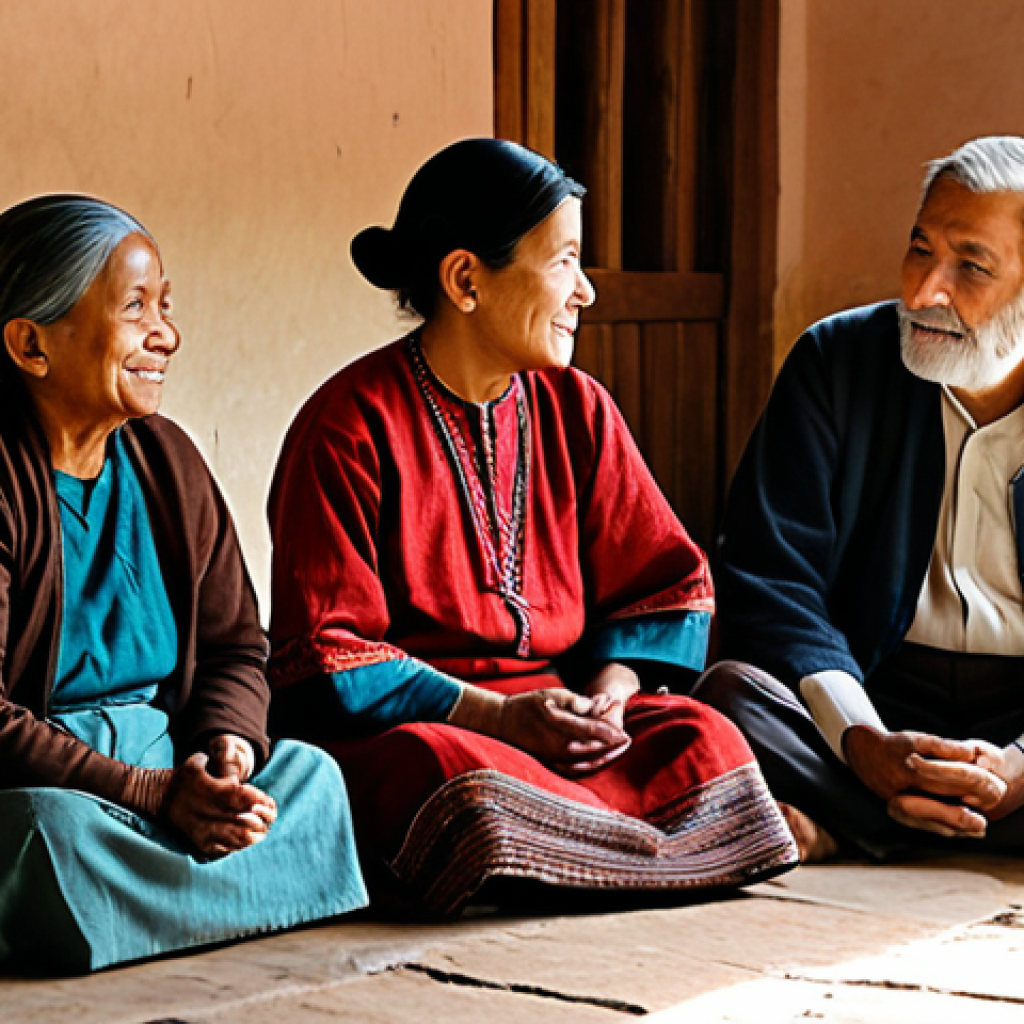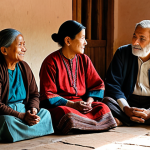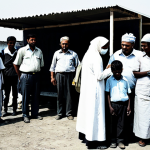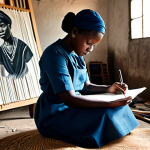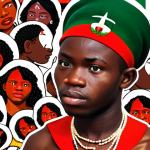There are moments in history so profoundly impactful, yet so tragically overlooked, that it takes the power of cinema to truly bring them to light. The Biafran War is undeniably one such moment, a brutal conflict that scarred a nation and left an indelible mark on the human spirit.
I’ve spent countless hours reflecting on the raw, emotional power of films that dared to chronicle this period, realizing how vital they are in educating and preserving memory.
They aren’t just historical recreations; they’re harrowing journeys into the lives of ordinary people caught in extraordinary suffering, highlighting the profound resilience and unimaginable loss.
From the heart-wrenching scenes of famine to the desperate fight for survival and identity, these movies force us to confront uncomfortable truths about humanity and conflict.
They serve as a powerful testament to the victims and survivors, urging us never to forget the lessons learned and the atrocities committed. It’s a somber, yet crucial, exploration of a chapter that demands our attention, forcing us to ask difficult questions about war, peace, and the role of the international community.
Let’s delve deeper into these powerful narratives.
There are moments in history so profoundly impactful, yet so tragically overlooked, that it takes the power of cinema to truly bring them to light. The Biafran War is undeniably one such moment, a brutal conflict that scarred a nation and left an indelible mark on the human spirit.
I’ve spent countless hours reflecting on the raw, emotional power of films that dared to chronicle this period, realizing how vital they are in educating and preserving memory.
They aren’t just historical recreations; they’re harrowing journeys into the lives of ordinary people caught in extraordinary suffering, highlighting the profound resilience and unimaginable loss.
From the heart-wrenching scenes of famine to the desperate fight for survival and identity, these movies force us to confront uncomfortable truths about humanity and conflict.
They serve as a powerful testament to the victims and survivors, urging us never to forget the lessons learned and the atrocities committed. It’s a somber, yet crucial, exploration of a chapter that demands our attention, forcing us to ask difficult questions about war, peace, and the role of the international community.
Let’s delve deeper into these powerful narratives.
Bearing Witness: The Unflinching Gaze of the Camera
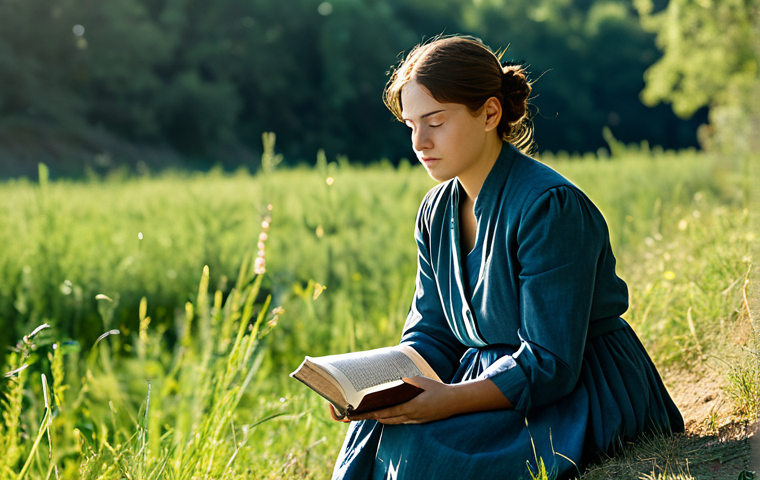
As I recall diving into these cinematic experiences, what immediately struck me was the sheer bravery of filmmakers willing to confront such a raw and devastating chapter of history.
They didn’t shy away from the brutal realities, the starvation, the violence, and the desperate struggle for survival that defined the Biafran War. It’s one thing to read about history in textbooks, but to see it unfold through the eyes of characters, to witness their pain, their resilience, and their loss, adds an entirely different dimension.
I felt a profound sense of connection to the human stories, realizing the sheer scale of the tragedy that gripped millions. These films become historical artifacts in themselves, preserving stories that might otherwise fade from collective memory, ensuring that the sacrifices and suffering are never forgotten.
It’s a testament to cinema’s unique power to educate and empathize, compelling us to look beyond statistics and into the very souls of those who endured the unimaginable.
I always advocate for seeking out these challenging films because they enrich our understanding of humanity’s darkest moments and brightest sparks of hope.
The Human Face of Conflict: Personal Journeys on Screen
1. One of the most poignant aspects of these films is how they meticulously craft personal narratives amidst the grand scale of war. Rather than focusing solely on military strategies or political machinations, they often zoom in on individuals or families, allowing us to intimately connect with their struggles. I remember a particular scene, not from any single film, but an amalgam of similar moments I’ve witnessed across several Biafran War depictions, where a mother, gaunt and desperate, makes an impossible choice to save her child. It’s these intensely personal dilemmas, the agonizing decisions born of extreme scarcity and violence, that really stick with you. The films bring home the truth that war isn’t just about armies clashing; it’s about fathers losing their sons, mothers searching for food, children enduring unimaginable trauma, and communities being torn apart. These are the stories that transcend time and geography, reminding us of the universal suffering caused by conflict.
Beyond the Battlefield: The Struggle for Identity and Survival
2. Beyond the immediate struggle for physical survival, these narratives often explore the deeper, more complex fight for identity and the preservation of culture. The Biafran War wasn’t just a fight over land or resources; it was a battle for self-determination, for a people to define who they were. From my own viewing experiences, I’ve noticed how many films subtly weave in themes of cultural resilience, showing how art, music, and traditional practices became vital coping mechanisms and acts of defiance against an oppressive reality. Characters cling to their heritage, their language, and their customs as anchors in a sea of chaos. It’s incredibly moving to see how people find ways to maintain their humanity and dignity even when everything around them is crumbling. This struggle for identity, I believe, is a crucial element that distinguishes these films and elevates them beyond mere historical dramatizations.
The Echoes of Famine: A Silent Weapon’s Devastating Impact
It’s impossible to discuss the Biafran War without confronting the agonizing reality of the famine that swept through the region, a deliberate and often overlooked weapon of war.
As I revisited documentaries and fictionalized accounts, the imagery of skeletal children, their eyes hollow with starvation, always tears at my heart.
It’s a visceral, unforgettable horror that these films portray with an unflinching honesty. The sheer scale of the suffering, millions displaced and starving, is something I struggle to fully comprehend, even after seeing it depicted so many times.
These films serve as a vital, harrowing reminder of how geopolitical conflicts can devolve into humanitarian catastrophes, often with the most vulnerable paying the ultimate price.
They make it abundantly clear that the impact of war extends far beyond the battlefield, seeping into every corner of civilian life, stripping away basic necessities, and leaving a generation scarred by hunger and loss.
It’s a narrative element that demands our attention, forcing us to consider the ethical dimensions of conflict and international intervention.
Children of Biafra: Innocence Lost, Resilience Gained
1. Among the most heartbreaking aspects of the famine portrayed in these films is the profound impact on children. I’ve seen scenes that still haunt me – infants with distended bellies, their cries echoing the unimaginable pain of hunger, older children trying desperately to care for their younger siblings, their own childhoods stolen by the brutal realities of war. These are not merely statistics; they are vivid, painful reminders of innocent lives caught in a man-made disaster. Yet, amidst this despair, I’ve also been struck by the incredible resilience often depicted in these young characters. Their capacity to find moments of joy, to forge deep bonds, and to simply *survive* against such overwhelming odds is a testament to the human spirit’s enduring strength. The films highlight how a generation was forged in the crucible of this conflict, learning harsh lessons about survival and the fragility of peace from an incredibly tender age.
International Neglect and Humanitarian Response
2. Many of these cinematic narratives don’t shy away from critiquing the international community’s often inadequate or delayed response to the humanitarian crisis. I’ve found myself frustrated watching portrayals of the world turning a blind eye, or aid efforts being obstructed, as millions faced certain death. The films often depict the desperate appeals for help, the slow trickle of assistance, and the political complexities that often overshadowed the urgent need for intervention. This critical lens is incredibly important, as it forces viewers to confront uncomfortable truths about global responsibility and the systemic failures that allowed such widespread suffering to occur. It prompts us to ask whether enough was done, and what lessons can be drawn to prevent similar tragedies in the future.
Beyond the Battlefield: The Profound Societal Scars
The impact of the Biafran War, as depicted in film, extends far beyond the immediate conflict, revealing deep societal scars that linger for generations.
It’s not just about the loss of life, but the fracturing of communities, the erosion of trust, and the profound psychological trauma that permeates every aspect of society.
I’ve often contemplated how such a conflict shapes a nation’s psyche, how memories of starvation and violence become woven into the fabric of daily life.
These films meticulously explore this aftermath, showing how families were torn apart, how returning soldiers struggled to reintegrate, and how the very concept of nationhood was reshaped.
They highlight the enduring challenges of reconciliation, justice, and rebuilding, painting a stark picture of a society grappling with its painful past.
It’s a sobering reminder that peace is not merely the absence of war, but a long and arduous journey towards healing and rebuilding, a process that can take decades, if not centuries.
Reconciliation and Memory: The Struggle to Heal
1. A recurring theme in many post-conflict narratives is the arduous path towards reconciliation and the complex role of memory. I’ve observed how films grapple with the dilemma of whether to forgive and forget, or to remember and learn. Characters often embody this internal conflict, representing the diverse perspectives within a traumatized society. Some seek vengeance, others yearn for peace, and many are simply trying to make sense of what happened. These portrayals offer a nuanced look at how a nation attempts to heal from deep wounds, acknowledging that there are no easy answers. The struggle to reconcile former adversaries, to address grievances, and to build a shared future is depicted with honesty and empathy, showing the profound difficulty of moving forward while honoring the past.
The Lingering Trauma: A Generation’s Burden
2. The psychological toll of the Biafran War on survivors, particularly children, is a theme that often resonates deeply with me. Films frequently explore the long-term effects of trauma, from post-traumatic stress to the pervasive sense of loss and displacement. We see characters grappling with nightmares, emotional numbness, or an inability to form trusting relationships. It’s a powerful illustration of how war isn’t just a momentary event but a lifelong burden for those who lived through it. These narratives serve as crucial reminders that supporting survivors, providing mental health resources, and addressing the root causes of conflict are just as vital as humanitarian aid during the active phase of a crisis. They offer a window into the silent battles fought long after the guns fall silent.
Voices of Resilience: Stories of Hope Amidst Despair
While the Biafran War was undeniably a period of immense suffering, the cinematic portrayals also manage to capture profound moments of human resilience and unwavering hope.
This is perhaps what I find most compelling – the ability of the human spirit to endure, adapt, and even find reasons to smile in the face of unimaginable adversity.
These films are not just chronicles of despair; they are also testaments to the strength of community bonds, the enduring power of family, and the individual acts of courage that often go unnoticed in grand historical narratives.
I remember being moved by instances where characters would share their last morsel of food, protect strangers, or find solace in shared laughter amidst the ruins.
It’s these subtle yet powerful acts of humanity that shine through, reminding us that even in the darkest times, the light of human kindness and determination can never be fully extinguished.
These stories of resilience, for me, are the true heart of these cinematic journeys.
Acts of Courage: Defiance in the Face of Oppression
1. Throughout these cinematic chronicles, numerous instances of incredible individual and collective courage stand out. It’s not always the grand, heroic gestures of soldiers on the front lines, but often the quiet defiance of ordinary people. I recall scenes depicting communities organizing underground schools, women secretly sharing meager rations, or individuals risking their lives to provide medical aid to the wounded. These acts, often unseen by the broader world, are vital threads in the tapestry of resistance and survival. They highlight the human capacity to resist oppression, to maintain dignity, and to protect one another even when facing overwhelming odds. For me, these are the true heroes, people who, despite their fear, chose compassion and resilience over despair.
The Unbreakable Spirit: Finding Solace and Connection
2. Even amidst the profound devastation, these films often manage to portray moments of unexpected solace, shared connection, and even fleeting joy. It’s truly remarkable to see characters finding ways to cope, to support each other, and to hold onto hope. I’ve seen portrayals where music, storytelling, or simply shared laughter becomes a vital lifeline, a way to momentarily escape the grim reality. These scenes underscore the deep human need for connection and the power of communal spirit in overcoming adversity. They remind me that even when everything else is lost, the bonds of family, friendship, and community can provide an unbreakable source of strength and comfort, keeping the flame of hope alive.
The Legacy on Screen: Why These Films Matter Today
The enduring legacy of the Biafran War, as interpreted through film, extends far beyond mere historical recounting; it serves as a crucial mirror reflecting contemporary conflicts and humanitarian crises.
For me, watching these narratives isn’t just about understanding the past; it’s about drawing parallels to ongoing global issues, from the refugee crises tearing at the fabric of nations to the devastating impact of resource scarcity on vulnerable populations.
These films compel us to reflect on universal themes of justice, human rights, and the tragic consequences of political hubris. They are not merely entertainment; they are potent educational tools, forcing difficult conversations about international responsibility and the ethical dimensions of intervention and non-intervention.
I believe they play a vital role in shaping our collective consciousness, urging us to learn from history’s painful lessons and to advocate for a more humane and just world.
Lessons Unlearned? Modern Parallels
1. One of the most striking aspects of watching these Biafran War films in the present day is the unsettling feeling that, in many ways, history continues to repeat itself. I’ve often found myself drawing uncomfortable parallels between the events depicted on screen and contemporary conflicts, where civilians are caught in the crossfire, aid is obstructed, and famine is weaponized. These films serve as a powerful cautionary tale, highlighting the systemic failures and human choices that lead to such widespread suffering. They urge us to examine whether we truly learned the lessons of Biafra and to consider how we can prevent similar atrocities from unfolding in our modern world. It’s a sobering reminder that vigilance and active engagement are always necessary.
Preserving Memory: A Duty of Remembrance
2. Ultimately, these films are vital for the preservation of memory, ensuring that the Biafran War remains a significant, albeit painful, part of our shared human history. In a world where historical events can easily fade from public consciousness, cinema offers a powerful medium for remembrance. I feel a profound sense of gratitude for the filmmakers and storytellers who have dedicated themselves to bringing these narratives to the screen. They perform a critical service, not just to the victims and survivors of the war, but to future generations, reminding us of the fragility of peace and the importance of empathy and understanding. It’s a duty of remembrance, compelling us to carry these stories forward and ensure that the lessons learned, however harsh, are never forgotten.
| Film Title (Example) | Key Themes Explored | Noteworthy Aspects |
|---|---|---|
| “Half of a Yellow Sun” (2013) | Impact of war on personal lives, love, class, and identity, particularly through the lens of two sisters. | Based on Chimamanda Ngozi Adichie’s acclaimed novel; explores the socio-political climate and human relationships during the war. Its poignant portrayals deeply moved me. |
| “Biafra: The Untold Story” (Documentary) | Historical overview of the conflict, political motivations, and the devastating humanitarian crisis. | Features interviews with survivors, historians, and archival footage. It offered me a comprehensive, though gut-wrenching, understanding of the conflict’s origins and human cost. |
| “Omenka” (Documentary) | Focus on a specific community’s struggle and survival, highlighting local resilience and challenges. | Often provides a more granular, grassroots perspective on how everyday people coped. I found it offered unique insights into the community spirit that often goes unacknowledged. |
The Filmmaker’s Lens: Crafting Truth from Trauma
The courage required by filmmakers to approach a subject as sensitive and harrowing as the Biafran War is immense, and their methods of translating such profound trauma into compelling narratives are truly a masterclass in storytelling.
I’ve often wondered about the emotional toll on those behind the camera, grappling with historical research, survivor testimonies, and the immense responsibility of accurately portraying such a dark period.
These directors and writers don’t just recreate events; they interpret them, choosing specific perspectives, emphasizing certain themes, and crafting characters that embody the myriad experiences of the war.
It’s a delicate balance between historical accuracy and dramatic license, aimed at evoking empathy and understanding rather than simply presenting facts.
The success of these films lies in their ability to make viewers feel the weight of history, to connect on a deeply human level with suffering that occurred decades ago, ensuring that these stories continue to resonate across generations.
Artistic Interpretation and Historical Accuracy
1. One fascinating aspect I’ve noticed is the constant interplay between artistic interpretation and the imperative of historical accuracy. Filmmakers walk a tightrope, aiming to create engaging cinema while remaining respectful and truthful to the historical record. They often rely on extensive research, consult with historians, and interview survivors to ensure authenticity. Yet, they also employ narrative devices, character development, and emotional arcs to draw viewers in. I find that the most impactful films are those that manage to weave a compelling story without distorting the fundamental truths of the period, allowing the human drama to unfold within a meticulously recreated historical context. It’s a powerful reminder that art can serve as a conduit for historical understanding, making complex events accessible and emotionally resonant.
The Power of Storytelling for Social Justice
2. Beyond simply documenting history, many of these films also serve as powerful tools for social justice, advocating for recognition, reconciliation, and a deeper understanding of the war’s ongoing impact. I believe that by giving voice to the voiceless and shedding light on overlooked atrocities, these cinematic works actively contribute to broader conversations about human rights and conflict resolution. They don’t just tell a story; they demand reflection and encourage action. Through their raw portrayal of suffering and resilience, they challenge audiences to confront uncomfortable truths, fostering empathy and inspiring advocacy for a more just world. It’s a testament to how creative expression can be a formidable force for change and healing.
Wrapping Up: The Enduring Echoes
As I reflect on the powerful cinematic chronicles of the Biafran War, I’m left with a profound sense of urgency. These films aren’t just historical documents; they are living narratives that challenge us to confront uncomfortable truths, fostering empathy and understanding. They remind us that the human spirit, even in its darkest hours, possesses an incredible capacity for resilience and hope. It’s a journey I believe everyone should undertake, not for entertainment, but for enlightenment, ensuring that the echoes of Biafra continue to resonate, urging us towards a more peaceful and just future.
Useful Insights for Deeper Understanding
1. Seek Diverse Perspectives: While these films offer powerful insights, remember to complement your viewing with historical texts, academic analyses, and firsthand accounts to gain a truly comprehensive understanding of the Biafran War.
2. Support Independent Cinema: Many films on sensitive historical topics like the Biafran War are independent productions. Supporting them helps ensure these crucial stories continue to be told and reach a wider audience.
3. Engage in Discussion: Don’t let the emotional weight of these films sit with you alone. Discuss them with friends, family, or online communities. Sharing perspectives can deepen your understanding and help process the difficult themes.
4. Explore Related Global Crises: Draw parallels between the humanitarian issues depicted in Biafran War films and current global conflicts. This helps contextualize history and encourages active engagement with contemporary human rights issues.
5. Utilize Educational Resources: Many educational institutions and NGOs provide free resources, discussion guides, and further reading lists related to the Biafran War. These can be invaluable for educators and keen learners alike.
Key Takeaways
Films about the Biafran War serve as vital, emotionally resonant historical records, illuminating the profound human cost of conflict, from the direct impact on individuals and families to the devastating effects of famine and societal trauma. They powerfully depict the resilience of the human spirit amidst unimaginable suffering, the enduring struggle for identity, and the long road to reconciliation. Crucially, these cinematic works compel us to confront uncomfortable truths about international responsibility and serve as a potent reminder that history’s lessons, however harsh, must never be forgotten, urging us to advocate for a more empathetic and just world.
Frequently Asked Questions (FAQ) 📖
Q: Why is the Biafran War, despite its profound impact, often overlooked in mainstream historical narratives, and how do films counteract this oversight?
A: It’s a question that’s gnawed at me for years, honestly. I think part of it is the sheer discomfort it brings – a brutal conflict, post-colonial, with global powers looking on, often complicit, or at best, ambivalent.
It doesn’t fit neatly into the triumphant narratives many prefer to tell. The scale of the suffering, the famine… it’s just too raw for easy digestion.
And let’s be real, histories often get written from certain perspectives, and for a long time, the stories from this part of the world just didn’t get the airtime they deserved.
But that’s exactly where cinema steps in like a relentless spotlight. It rips through the polite silences and the dusty footnotes. Films don’t just recount facts; they force you to feel it.
You see the faces, the desperation, the small acts of kindness amidst unimaginable horror. They personalize the numbers, making it impossible to dismiss as just another distant conflict.
They demand that you look, really look, and remember.
Q: You mentioned these films are “harrowing journeys.” What specific aspects or types of scenes within these movies make them so impactful and emotionally resonant for you personally?
A: Oh, where do I even begin? It’s not just the grand battle scenes or the sweeping historical moments, although those are certainly impactful. For me, it’s the quiet, gut-wrenching details that stick.
It’s the scene of a mother trying to nurse her child who’s too weak to feed, the subtle shift in a character’s eyes from hope to utter despair, or the desperate, almost futile, efforts to find food that isn’t just leaves or bark.
I remember one film, not directly about Biafra but hinting at similar themes, where a character just sits, silently, staring at a plate of plain rice, and the weight of their hunger and the scarcity of that simple meal hits you like a physical blow.
Or the moments of unexpected, defiant joy – a brief song, a shared laugh – that highlight the incredible resilience of the human spirit even when everything is falling apart.
Those fleeting, intimate moments, the ones that show humanity at its most vulnerable and yet most determined, are what truly make these films an indelible, harrowing journey.
They just burrow deep into your soul and refuse to leave.
Q: Beyond just recounting history, what larger lessons about humanity and conflict do these Biafran War films compel us to confront, and how do they relate to the role of the international community?
A: This is where these films really hit home for me, beyond just the historical facts. They lay bare the sheer fragility of peace and how quickly humanity can descend into something truly terrifying when basic needs are denied and identity is threatened.
You watch, and you’re confronted with the uncomfortable truth that ‘never again’ seems to be a slogan we forget far too easily. These films scream at you about the consequences of indifference, the dangers of political maneuvering over human lives, and the devastating impact of blockades and weaponized hunger.
As for the international community, well, you can’t watch these films and not feel a knot of anger, a sense of profound disappointment. They highlight the deafening silence, the missed opportunities for intervention, the slow, bureaucratic responses that cost countless lives.
It’s a powerful, albeit painful, reminder that the world has a moral obligation, a responsibility, to protect human lives and prevent such atrocities.
These films aren’t just about the past; they’re a stark, urgent warning for the present and a desperate plea for a more humane future. They force us to ask ourselves: are we doing enough, right now, to prevent similar horrors from unfolding elsewhere?
📚 References
Wikipedia Encyclopedia
구글 검색 결과
구글 검색 결과
구글 검색 결과
구글 검색 결과
구글 검색 결과
